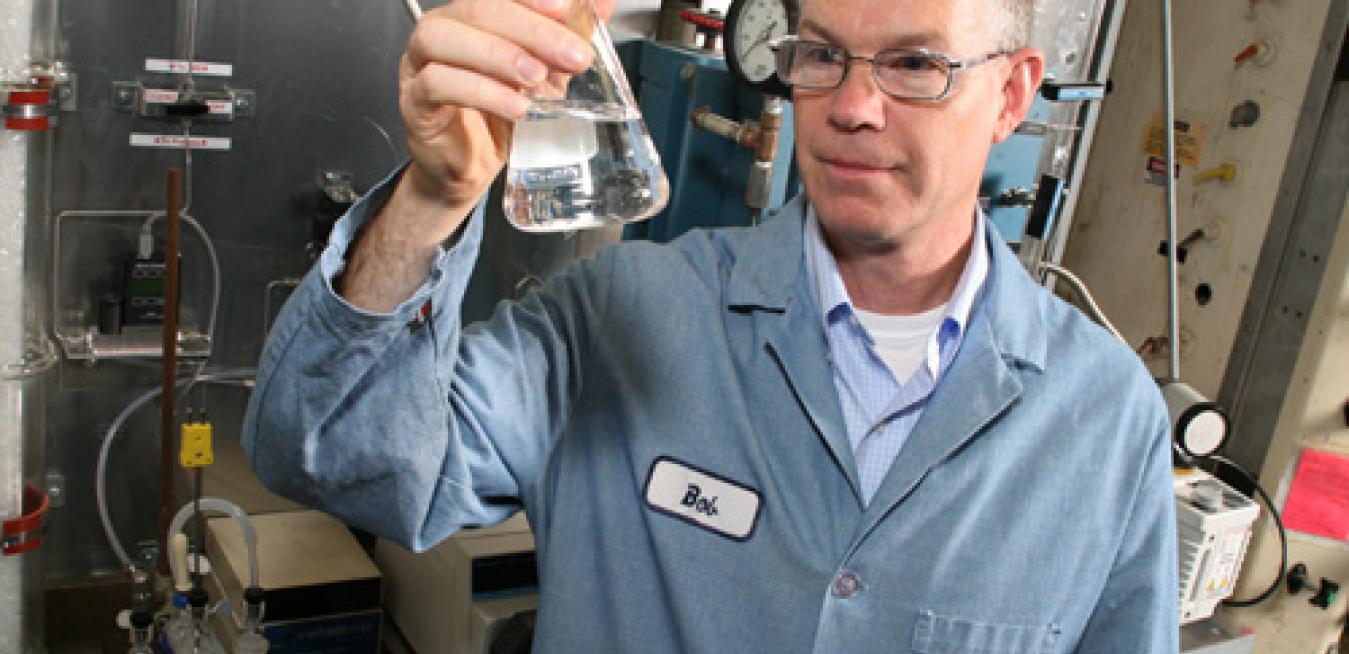First the good news. Carbon dioxide emissions from coal have been falling over the last five years in the U.S., hitting the lowest point for any quarter since 1986 in March 2012. Cheap natural gas allowed utilities to cut back on coal, the most “carbon-intense” fossil fuel used for power generation. But coal-fired power plants are not going away anytime soon in the U.S., and countries like China and India, which already burn half of the world’s coal, are leading in building new ones.
That’s why Robert Perry, and scientists like him, are developing new kinds of traps that stop carbon from escaping through the smokestack. Perry, a chemist at GE Global Research, has been experimenting with materials normally found in bathrooms and laundry rooms, like shampoo conditioners and textile softeners.
Lather, rinse, repeat: Perry is using compounds normally found in bathrooms and laundry rooms to trap carbon dioxide.
Perry employs the materials, which chemists call aminosilicones, like a conveyor belt. They efficiently glom on to CO2 gas at about 105 F and release CO2 after heating the mixture to 250 F. The system then cools down the aminosilicone and it returns to trap more gas.
Unlike conventional carbon capture methods, Perry’s process doesn’t need any water. Which is where the money is. “If you need to boil water to drive off the CO2, you are facing an enormous energy drain,” he says. “The existing technology will increase your cost of electricity by 80 percent. You almost have to build a plant that’s twice as large to power the scrubber and send electricity to the consumer.” Perry and his team has filed several patents for their method.
The U.S. Department of Energy wants to bring the electricity cost of CO2 capture no higher than 35 percent above what it costs now, but Perry says that “anyone who can get under 50 percent might be doing really well.”
He is now moving from beakers and tubes in his lab to a new 15-foot apparatus where his team can harvest engineering data to validate their models. He is also already looking at “near-term” applications at cement plants, steel mills, and small power plants.
What about the gas? Perry says that it can be used for oil and natural gas extraction, and also to grow plants. In the Netherlands, for example, farmers are using a CO2-enriched atmosphere to enhance the growth of vegetables and tulips. Now, that’s green energy.





